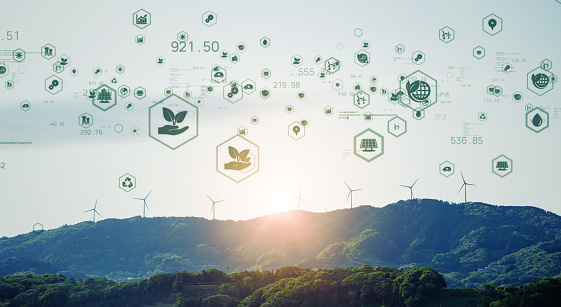Indonesia is currently incessantly making an economic transition to a green economy. This is done by the government to create a nation’s economy that also focuses on protecting the natural environment. Indonesia is expected to become an emission-free country in the future and free from the greenhouse effect. So what are the challenges and benefits in the future?
According to an explanation from the Ministry of National Development Planning or Bappenas, they predict that green economy investment can create seven to ten times more jobs than conventional investments.
The Director of Manpower at Bappenas Mahatmi Parwitasari Saronto believes that this green economy transition program will be a driving force for the nation’s economy that is inclusive, environmentally friendly, and can free Indonesia from the term middle income trap.
“Green economic policies can create new jobs that are more sustainable. Green economy investment is estimated to be able to grow seven to 10 times more jobs than conventional investment,” she said during the Green Jobs webinar, Tuesday night (8/2/2022).
She also detailed the benefits of the green economy, especially during the post-pandemic economic recovery. She said there are two benefits, namely short-term benefits and long-term benefits.
In the short term, this green economy can increase and create environmentally friendly jobs, while in the long term it can maintain stable and sustainable economic growth.
She explained in more detail, the main factor was that green sector jobs were considered more labor-intensive. These additional jobs were created as a result of interventions in the renewable energy sector, electric vehicle technology, energy efficiency, land use, and improved waste management.
Multiple Challenges
Although this green economy is predicted to bring many benefits for Indonesia, there are still some challenges that must be faced in the transition process.
Mahatmi also said that the green economy transition faces major challenges, including funding, the risk of stranded assets that have been built, challenges to technology transfer, and preparation for migration of workers to green jobs, as well as the Covid-19 pandemic.
Furthermore, according to the Deputy for Economic Affairs of Bappenas Amalia Adininggar Widyasanti, one of the biggest challenges is the dependence of the economy and exports on coal which makes it difficult for Indonesia to switch to the use of New and Renewable Energy (EBT).
This can be seen from several provinces that still use the coal sector as the only source of the economy. It is understandable because the price of coal is relatively cheaper than other EBT.
Indonesia also has another very large NRE potential. She said, “The installed NRE capacity compared to the potential NRE capacity in Indonesia is very high. For example, the potential for solar energy is 207.9 GW but only 0.2 GW is being utilized. Then hydro energy has a potential of 94.5 GW. GW but only 6.1 GW has been utilized.”
Moreover, according to research by the Institute for Essential Services Reform (IESR), Indonesia’s geothermal energy potential is 29.5 GW, while only 2.3 GW has been utilized.
For new bioenergy, 1.9 GW has been utilized from the total capacity of 32.7 GW. Then, only 0.2 GW of the total potential of 60.6 GW of wind energy has been utilized, but no tidal energy potential has been utilized.























